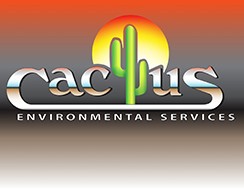
Methods of Hazardous Waste Disposal for Business

Hazardous waste is a major concern in most US states. Considering the growing number of manufacturing companies, the amount of hazardous waste keeps increasing, resulting in the need for efficient disposal mechanisms. Luckily, many companies offer hazardous waste disposal services to eliminate harmful waste products generated from industrial processes.
Cactus Environmental Services is a leader in hazardous waste disposal in Dallas, Fort Worth. We are prepared for any mess by offering a wide range of services, starting with consolidation, disposal, and clean-up. Some of our services include waste transportation, tank cleaning, environmental remediation, and vacuum services, among many others.
We are fully equipped to handle different types of waste safely and efficiently. Are you seeking waste disposal services for your business? The many hazardous waste disposal methods allow you to deal with hazardous waste in your company.
Professional Hazardous Waste Removal Methods
The common hazardous waste disposal methods include recycling, landfill disposal, incineration, and ocean and underground disposal. Your choice of disposal method will depend on the type of waste and budget. Hiring the right team will help determine your business’s most suitable disposal technique. That’s why we put together a list of common hazardous waste removal methods we offer.
Underground Disposal
Underground disposal is a cost-effective way of dealing with hazardous waste. It is commonly used to dispose of harmful waste from medical facilities, laboratories, or ore mining companies. This approach offers considerable benefits over surface waste elimination techniques.
Underground hazardous waste disposal is associated with minimal leakage and eliminates earthquake motions, flood waters, and visual impacts.
However, disposal sustainability may vary from one company to another. It is then advisable to engage a reputed hazardous waste disposal company to ensure the operations adhere to EPA standards.
Landfill Disposal
Landfills are common hazardous waste disposal methods. Most wastes that are not recycled or reused end up in landfills. What are landfills? These dumping sites are excavated within the ground to avoid upward piling.
They are lined up with clay and non-porous substances to avoid waste leaks into the ground and are not ideal for liquid wastes. Hazardous wastes may not harm humans, but there could be some risk in case of landfill leaks.
Ocean Disposal
Depositing hazardous waste in the deep sea is a common way of disposing of hazardous waste. Most companies and organizations dispose of their toxic waste in deep seas, lakes, and oceans.
However, this could pose a danger to humans and marine life, the reason why the waste is treated before dumping. Treatment of such waste is critical since it poses health risks to humans after consuming seafood.
Ocean disposal is illegal in some states but is approved by EPA for companies with proper permits and adherence to stringent guidelines. Waste treatment forms an integral part of hazardous waste ocean disposal. Otherwise, heavy metals can cause considerable pollution to ocean waters.
Recycling
Recycling is a preferable way to handle hazardous waste, and the reasons are apparent. It promotes the reclamation and reuse of useful materials in a way that promotes human and environmental safety.
Reclamation: Waste is reclaimed if processed or regenerated to recover usable products.
Reuse: Waste is reused if it is used as an ingredient in manufacturing processes to make new products.
Recycling hazardous waste minimizes reliance on raw materials and conserves natural resources. The procedure also cuts down on energy consumption and minimizes pollution. Recycling hazardous waste also means less waste is put up for treatment or disposed of, resulting in a minimal need for landfills and incinerators.
Incineration & Combustion
Incineration or combustion employs high temperatures to burn waste. Incineration for hazardous waste uses different combustion units for solid and liquid wastes. These are;
- Incinerators
- Boilers
- Industrial furnaces
Incinerators are helpful for burning hazardous waste and are handy in waste destruction. Similarly, boilers and industrial furnaces are primarily used for energy and material recovery.
Incineration can destroy the toxic organic matter in hazardous waste if done correctly. But, it is not very effective for disposing of hazardous waste containing metals.
In the case of chemical waste, the disposal company should follow the proper chemical waste disposal methods. The EPA (Environmental Protection Agency) regulates chemical waste since it should not be disposed of in conventional trash bins or sewers.
Most chemicals should be categorized as other hazardous waste and disposed of following EPA hazardous waste guidelines.
Reliable Hazardous Waste Disposal Services in Dallas
Are you seeking a reliable company for your business hazardous waste disposal needs in Dallas? Cactus Environmental got you covered! We handle different types of waste and employ different waste disposal methods. Visit our service page to learn more about our services. Moreover, don’t hesitate to contact us for a free quote.
Disclaimer: Cactus strives to provide top-tier service for all industrial and commercial markets. For individuals needing residential services, please contact your city's Household Hazardous Waste Division.
